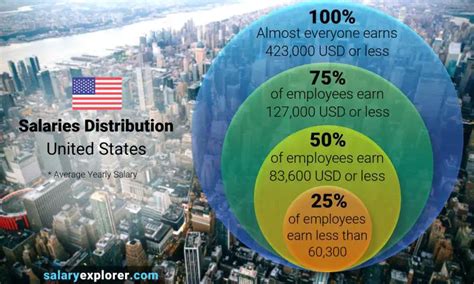Median pay is a statistical measure that represents the middle value of a distribution of values. In the context of employment, it refers to the point at which half of the workforce earns more and half earns less. Understanding median pay is crucial for various stakeholders, including economists, policymakers, and employees, as it provides insights into the labor market dynamics and wage disparities.

How is Median Pay Calculated?
Median pay is calculated by arranging all salaries in a particular dataset in ascending order. The middle value in the ordered dataset represents the median pay. If there is an even number of salaries, the median is the average of the two middle values. For example, if the salaries are {20,000, 25,000, 30,000, 35,000, 40,000}, the median pay is 30,000.
Median Pay vs. Mean Pay
Median pay is often contrasted with mean pay, which is another common measure of central tendency. Mean pay, also known as the average salary, is calculated by summing up all salaries and dividing the total by the number of observations. Unlike median pay, mean pay can be influenced by extreme values, such as very high or very low salaries.
In general, median pay is a more reliable measure of the typical salary in a population because it is not distorted by outliers. However, both median pay and mean pay can provide valuable information about the wage distribution.
Significance of Median Pay
Median pay has several important implications:
1. Wage Disparity: Median pay can reveal the extent of wage inequality within a population. A large gap between median pay and mean pay suggests a higher level of wage inequality, indicating a concentration of high salaries among a small portion of the workforce.
2. Labor Market Trends: Median pay can track changes in the labor market over time. Rising median pay indicates an improvement in living standards and economic growth. Conversely, stagnant or declining median pay can signal economic challenges or a lack of job creation.
3. Policy Implications: Median pay is often used by policymakers to shape economic policies. For example, minimum wage laws and wage subsidies are designed to increase median pay and reduce wage inequality.
4. Employee Salary Expectations: Median pay can serve as a benchmark for employees to negotiate fair salaries and understand their market value.
Median Pay Data and Sources
1. U.S. Bureau of Labor Statistics (BLS): The BLS publishes comprehensive data on median pay for various occupations and industries in the United States.
2. Census Bureau: The Census Bureau provides median income data for different demographic groups and geographic areas.
3. Salary.com: Salary.com is a private company that collects and publishes salary data from a large database of job titles and locations.
Median Pay Trends
1. Rising Median Pay: According to the BLS, the median weekly earnings of full-time wage and salary workers in the United States have risen steadily over the past several decades. In 2022, the median weekly earnings were $1,086, a significant increase from $471 in 1979.
2. Industry Disparities: Median pay varies significantly across industries. In 2022, the highest-paying industry was professional, scientific, and technical services, with a median annual wage of $110,890. The lowest-paying industry was retail trade, with a median annual wage of $30,090.
3. Occupational Differences: Median pay also varies significantly by occupation. In 2022, the highest-paying occupation was physicians and surgeons, with a median annual wage of $208,000. The lowest-paying occupation was retail salespersons, with a median annual wage of $26,570.
4. Geographic Variations: Median pay can also differ by geographic location. In 2022, the highest median annual wage was in the District of Columbia ($92,900), while the lowest was in Mississippi ($49,400).
Using Median Pay for Decision-Making
1. Salary Negotiation: Employees can use median pay data to research industry benchmarks and negotiate fair salaries during the job search process.
2. Business Planning: Employers can use median pay data to set competitive compensation packages and make informed hiring decisions.
3. Policy Analysis: Policymakers can use median pay data to assess the effectiveness of minimum wage laws and other policies designed to reduce wage inequality.
4. Research and Analysis: Researchers can use median pay data to study wage patterns, labor market trends, and the impact of economic policies.
Conclusion
Median pay is a valuable measure that provides insights into the distribution of salaries within a population. It is a more reliable indicator of the typical salary earned by workers compared to mean pay, as it is not distorted by extreme values. Understanding median pay is crucial for stakeholders, including economists, policymakers, employees, and employers, as it can inform decision-making, shape economic policies, and ensure fair compensation practices.
